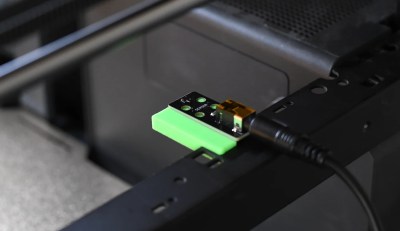When you watch a movie and see those perfect focus switches or zooms, the chances are you’re not seeing the result of the cameraman or focus operator manually moving the lens controls. Instead, they will have been planned and programmed in advance and executed by a motor. If you take a close look at many lenses you’ll see a ring that’s more than just extra knurling, it’s a gear wheel for this purpose. Want to experiment with this technique without buying professional grade accessories? [l0u0k0e] has you covered with a 3D printable focus zoom motor accessory.
The motor behind it all is a geared stepper motor, and there are a set of printed parts to complete the model. It’s recommended to use PETG, and nylon for the gears, but it would work in PLA with a shorter life. It’s designed to work with the standard 15 mm tube you’ll find on many camera rigs, and while you can write your own Arduino sketches to control it if you wish, we’re given instructions for hooking it up to existing focus drivers. The model is on Printables, should you wish to try.
This is by no means the first focus puller we’ve seen, in fact you can even use LEGO.




















